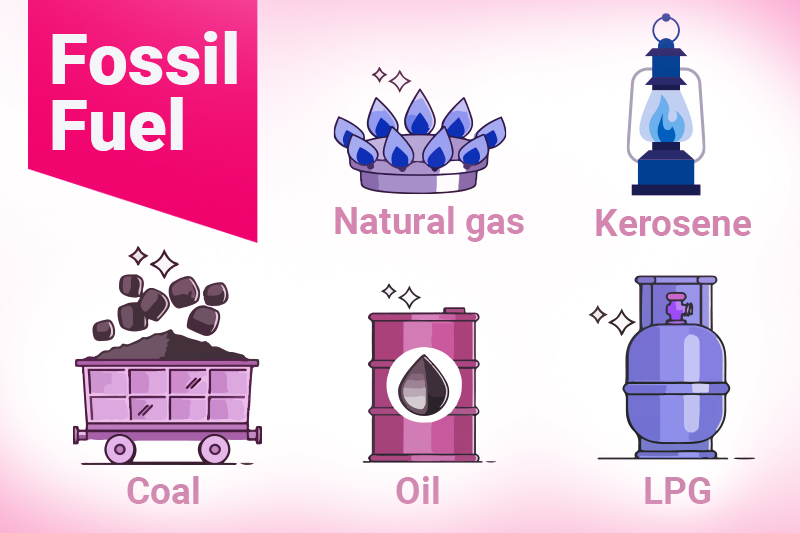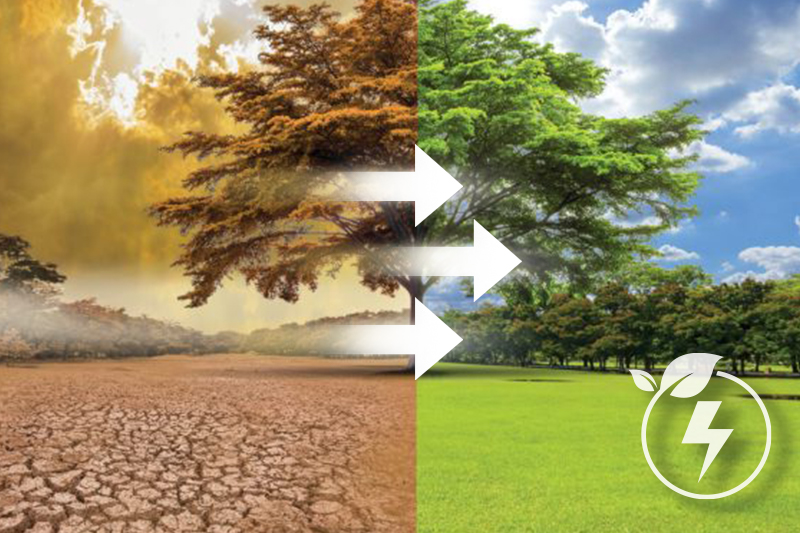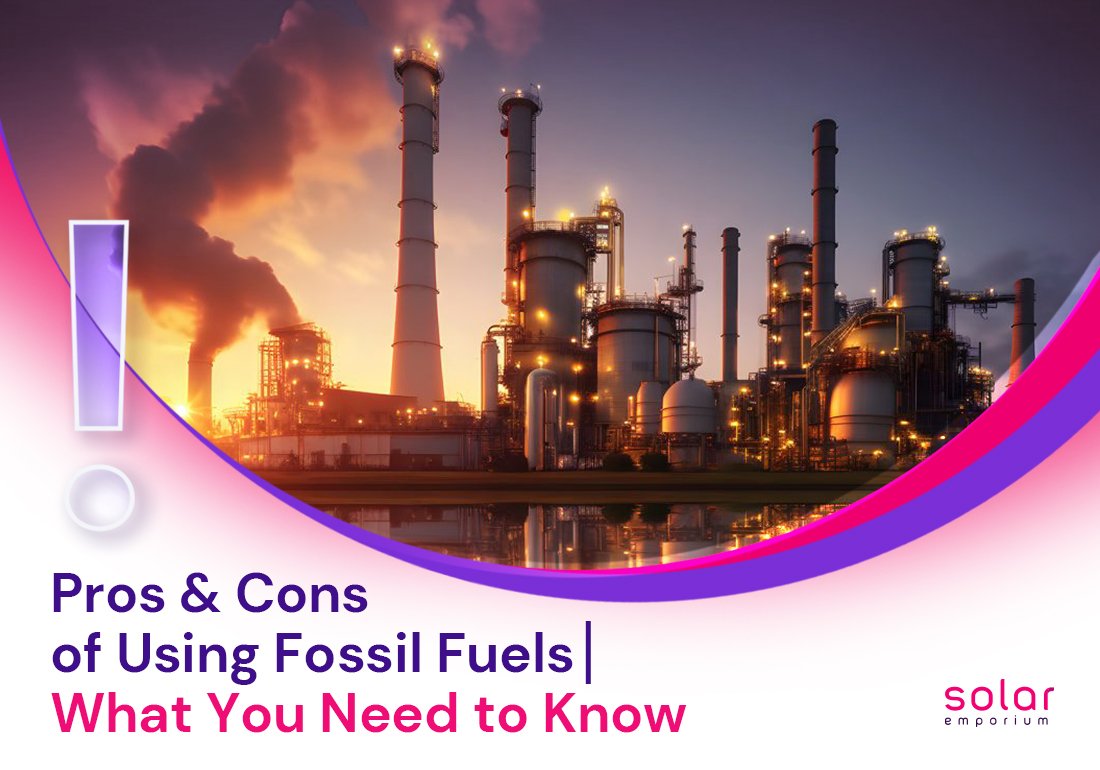Think of a buzzing city at dawn, where the sound of vehicles and the soft glow of streetlights promise the beginning of a new day. Over decades, fossil fuels have fueled this vibrant lifestyle and powered everything from homes to vehicles.
Fossil fuels generate around 80% of the world’s total energy. They are still considered the most widely used energy source and dominate Australia’s energy landscape significantly.
However, even though we celebrate the numerous benefits and convenient life that fossil fuels offer, their detrimental effects on the environment cannot be ignored.
So, what are the pros & cons of using fossil fuels? What hidden costs are we paying for this energy source? What happens to the air we breathe, the planet we inhabit, and most importantly, our future generations?
If these questions ever come to your mind, this blog will answer them all!
So, tag along and explore the complexities of choosing clean energy sources in the modern world.
What Is Fossil Fuel?
Fossil fuels are hydrocarbons containing materials formed naturally from dead plants and animals. These organic substances are deposited under the layers of rocks and sediments and decay over millions of years.
As time passes, the extreme heat and pressure from the earth’s internal surface transform these accumulated organic materials into carbon-rich energy sources.
Fossil fuels are also coined as non-renewable sources of energy. They cannot be replenished faster and are of limited availability.
So, as fossil fuels require a geographical time scale to regenerate, over-consumption can hamper their overall energy reserve.
From Black Gold to Brown Coal: Exploring Fossil Fuel Types
Before we dive into the advantages and disadvantages of fossil fuels, let’s tackle a burning question: What are the different types of fossil fuels?
So, let’s break it down!
Fossil fuels can be categorized into three main types: coal, oil(petroleum), and natural gas. They are found in all states in solid, liquid, and gaseous forms. Oil or petroleum is considered a liquid fossil fuel, while coal is a solid fossil fuel.
Additionally, methane is another fossil fuel found in the gaseous state. It is a much cleaner natural source, widely used for heating, cooking, and electricity generation in most Australian households.

Coal
Coal is a sedimentary rock that looks black or brownish-black in color, depending on its carbon content.
This non-renewable source is often called “brown coal” or “black coal”. It contains a significant amount of carbon, hydrocarbons, nitrogen, and sulfur that are readily combustible.
Moreover, the main types of coal include lignite, anthracite, and bituminous, of which anthracite is the hardest due to its high carbon concentration.
Formation Process of Coal | The Multifaceted Role of Coal |
|---|---|
The process of coal formation, known as coalification, started around 350 million years ago. During this time, plant remains, including ferns and trees from lush forests, became buried beneath soil layers for millions of years. As more soil accumulated, the heat and pressure gradually transformed these organic materials into coal. | Coal was one of the initial drivers of the Industrial Revolution. People use this energy for cooking, heating, and generating electricity in thermal plants. In ancient times, the steam generated from coal was also used to power railway engines. |
Crude Oil (Petroleum)
Crude oil is a liquid fossil fuel that’s also known as “black gold” due to its immense value, wide range of usage, and high demand.
Refining and splitting crude oil yields various valuable products that fuel our daily lives. By distilling this liquid fossil fuel, we extract petroleum gas (LPG), biodiesel, paraffin wax, lubricating oil, etc.
This intricate refining process transforms crude oil into the diverse fuels and materials that drive modern society.
Also, crude oil’s significance in the global economy and energy landscape made it a leading player in the Industrial Revolution and influenced geopolitics.
Formation Process of Crude Oil | The Multifaceted Role of Crude Oil |
|---|---|
Crude oil is formed when the remains of marine organisms, such as plankton or other sea creatures, accumulate on the ocean floor for millions of years. They are buried under layers of sediments, where the heat and pressure transform them into a waxy substance called kerogen. With continued heat and pressure for a long time, kerogen breaks down into liquid hydrocarbons, forming crude oil. | Refining crude oil produces the raw materials for plastic manufacturing, chemicals, and fertilizers. This is the world’s primary source of energy, helping to build roads and infrastructure and supplying gasoline and diesel for vehicles. |
Natural Gas
Natural gas, such as methane, is considered a cleaner-burning fossil fuel than coal and oil. It is colorless and odorless and stored by compressing under high pressure. Also, the extraction process for crude oil and natural gas is more or less similar.
However, methane is a greenhouse gas, so any leaks during extraction and transportation can massively contribute to climate change issues.
Formation Process of Natural Gas | The Multifaceted Role of Natural Gas |
|---|---|
Initially, Phytoplankton and zooplankton settle on the ocean floor, blending with organic materials to form mud. As sediments keep accumulating over this mud, it becomes buried and eventually transforms into organic shale, This shields the organic materials from oxygen and bacterial decomposition. With time, rising pressure and temperature convert that shale into a waxy kerogen. This kerogen is further decomposed into gaseous form When temperatures reach 90-160°C. | Natural gas is widely used for cooking, heating, and generating power. It is also used as fuel in the automobile sector and as raw materials in the fertilizer or chemicals industry. |
Energy Choices: Which Fossil Fuels Are Friendlier to the Earth?
We all know fossil fuels have some environmental impacts, but the effect can vary significantly depending on their carbon content, extraction process, and usage.
For instance, natural gas is often referred to as bridge fuel as it produces fewer carbon emissions than coal burning and oil spills. It is the least polluting fossil fuel or non-renewable source, helping in greater power generation.
On the contrary, coal is the most polluting and dirtiest fossil fuel, releasing vast amounts of greenhouse gases when burned.
Coal burning is a leading cause of air pollution and respiratory diseases and poses many environmental risks in the long run.
The Fossil Fuel Dilemma: Energy Source or Environmental Threat?
Fossil fuels have been powering the world for over 100 years. They are vastly popular and have a well-established foothold in the Australian market for offering high energy at a relatively low cost.
But does that mean they are the only reliable source of power? Certainly not!
Even though fossil fuels solely dominated the energy world for a long time with reliability, burning them can cause extreme damage to humans and the environment.
People find themself at loose ends while highlighting the tension between immediate energy needs and long-term sustainability.
So, in the following section, let’s look at the pros and cons of fossil fuels and explore other less harmful alternatives.

Pros & Cons of Using Fossil Fuel in Australia
Advantages of Fossil Fuel: Accessibility, Affordability, and Reliability
- Much More Reliable Than Renewable Energy
Like renewable sources such as solar panels and wind farms, Fossil fuels don’t depend on weather patterns or other environmental factors.
Whether day or night, fossil fuel can provide a stable and continuous energy supply according to user demands.
- Cost Less and Promotes Economic Growth
Fossil fuels have been used for over a century, which means they have a deeply rooted history in shaping our society.
Their well-developed structure, affordability, and wide accessibility help people use them effectively.
Fossil fuels are also a significant contributor to Australia’s economy. It fosters local economic growth by generating export revenues and jobs.
- Ensure High Energy Efficiency
Fossil fuel can produce a vast amount of electricity from a single location. It is available globally and is reasonably priced.
They can be burned anywhere, any place, to generate power, and their efficiency isn’t hindered by climate conditions or the sun’s irradiance like other renewables.
- Easy to Transport and Store
Energy derived from fossil fuels can be easily compressed under high pressure and stored for a long time. Resources such as oil and natural gas can be transported globally via pipeline.
- Versatile Energy Source
Abundant fossil fuel resources contribute to Australia’s energy security, allowing it to meet domestic energy needs.
In addition to cooking, heating, and electricity generation, they also play a pivotal role in the fertilizer, lubricants, and pharmaceuticals industries.
Disadvantages of Fossil Fuel: Understanding the Downsides
Now, let’s have a look at the dark side of using these non-renewable energy sources:
- Environmental Impact of Fossil Fuels
In recent years, Australia has faced several natural disasters, including frequent bushfires, storms, acid rains, and landslides.
Eventually, the main driver of these environmental issues is the consumption of excessive fossil fuels.
Also, the extraction process and combustion of fossil fuels degrade the land, pollute the air, and, most importantly, deplete the ozone layer, which is the leading cause of global warming.
- Limited Resource Availability
Fossil fuels are nonrenewable resources, and their high depletion rate raises concerns about future energy security.
Data from a recent survey says we will run out of oil within 47 years. Moreover, natural gas can power us for 52 years more and coal for 133 years.
However, if certain measures are not taken to reduce our consumption of fossil fuels, we may run out of them very quickly within our lifetime.
So, it clears the answer to another question: why do we need renewable energy?
- Potential Health Risks
Harmful chemicals and environmental pollution from fossil fuel combustion are highly interconnected to health issues. It can cause respiratory diseases like lung cancer, emphysema, and many other respiratory diseases.
- Energy Transition Costs
Fossil fuels are responsible for 70% of carbon dioxide CO2 emissions worldwide. This one factor is threatening enough, as they degrade the environment and contribute to the destruction of ecosystems.
For this reason, Australians are embracing sustainable renewable power such as wind power and solar energy to create a greener and healthier planet for a sustainable future.
However, though government policies are helping in the transition away from fossil fuels to sustainable energy sources, the process may require significant economic and social adjustments.
Time for Australia to Go Green: Are They Too Reliant on Fossil Fuels?
Australia is one of the largest fossil fuel exporters around the globe. But that’s not the issue.
However, the bitter fact and main issue is the lion’s share of Australia’s energy needs are still met by fossil fuels even when the world grapples with serious climate issues.
From generating electricity with coal to increasingly using natural gas for cooking and heating, the daily use of fossil fuels is skyrocketing.
Also, Australia’s transport system is heavily dependent on fossil fuels.
So, isn’t it high time to shift to renewable energy sources?
If you are thinking about how to transit, the best option for Australian residents could be to connect solar panels with electricity or by using wind power.
These sustainable energy sources outshine fossil fuels with minimum to zero greenhouse gas emissions.
People can also enjoy the full benefit of using natural renewable resources, such as the shining sun, blowing winds, or flowing water, to generate power.

Should Australians Invest More in Alternative Energy Sources?
Australia’s path forward involves a critical evaluation of energy sources. Investing in batteries, solar panels technology, hydropower plants, and other alternative energy sources is not only an environmental necessity but also an economic opportunity.
Also, the country is well-positioned to become a leader in renewable energy production with abundant sunshine and wind resources.
So, what’s the barrier now? Switch to clean energy, energize the planet responsibly, breathe easily, and live green.
For any further updates, keep an eye on Solar Emporium. You can also contact our expert teams for any of your solar needs!







